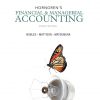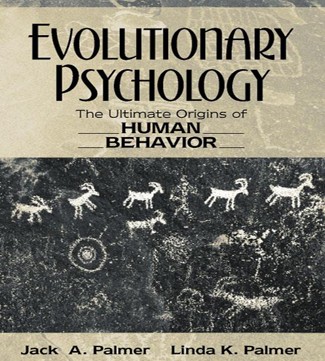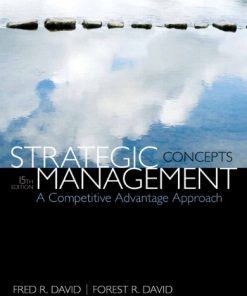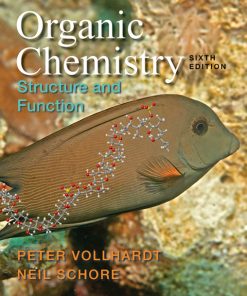Evolutionary Psychology The Ultimate Origins of Human Behavior 1st Edition Palmer Palmer Test Bank
$55.00
Evolutionary Psychology The Ultimate Origins of Human Behavior 1st Edition Palmer Palmer Test Bank
You will receive this product within 24 hours after placing the order
978-0205278688
CHAPTER ONE:
1. Which of the following are unique characteristics of placental mammals?
a. They have mammary glands.
b. They are born in an embryonic state. *
c. Fetuses are full developed at birth.
d. Infants do not need nourishment from their mother after birth.
2. A species is characterized by its ability to ___________.
a. Survive the birthing process.
b. Mate.
c. Produce viable, fertile offspring. *
d. Blend the characteristics of both parents.
3. What are mutations?
a. Animals born in an embryonic state.
b. Spontaneous changes in genes. *
c. A new species of animal.
d. None of the above.
4. __________ wrote An Essay on the Principles of Population in 1798.
a. Erasmus Darwin.
b. Charles Darwin.
c. Lyell.
d. Malthus. *
5. “You are shaped primarily by the culture you live in.” What does this statement best
describe?
a. Marxism.
b. Tabula Rasa.
c. Cultural Relativism. *
d. Social Darwinism.
6. ____________ believed that inherited traits are not blended but are translated as particles.
a. Malthus.
b. Aristotle.
c. Mendel. *
d. Wallace.
7. Ethology is the study of ______________.
a. Genetics.
b. Evolution.
c. Organisms in artificial environments.
d. Organisms in their natural environment. *
8. Darwin made his historic voyage on the _______.
a. Enterprise.
b. Pride of England.
c. H.M.S. Intrepid.
d. H.M.S. Beagle. *
2
9. Which of the following best defines a gene?
a. A section of DNA that codes for a specific protein. *
b. A karyotype of cellular structure.
c. An independent assortment of atoms.
d. The smallest unit of measurement in the body.
10. Which of these best explain why monotremes are considered mammals instead of
reptiles:
a. Because they lay eggs.
b. Because they are quadrupeds.
c. They nurse their young through mammary glands. *
d. They don’t have scales.
11. Who of the following wrote An Essay on the Principles of Population?
a. Erasmas Darwin.
b. Alfred Wallace.
c. Charles Lyell.
d. Thomas Malthus. *
12. Which of the following was the first to believe that all living things were connected by
common decent and that organisms would change according to their environment?
a. Charles Darwin.
b. Charles Lyell.
c. Erasmus Darwin. *
d. Thomas Malthus.
13. Which type of inheritance did Mendel demonstrate?
a. Blending.
b. Particulate. *
c. Both A & B.
d. Neither.
14. Which of the following is a specific type of gene on a chromosome?
a. Gamete.
b. Zygote.
c. Allele. *
d. Macro-mutation.
15. Whose theory of geologic change contributed to Darwin’s Theory of Evolution?
a. Charles Lyell. *
b. Thomas Malthus.
c. Gregor Mendel.
d. Alfred Wallace.
16. Who pioneered the tabula rasa theory?
a. Frank Boas.
b. Margaret Mead.
c. John Locke. *
d. B.F. Skinner.
3
17. Who of the following was not a proponent of Environmental Determinism?
a. Pavlov.
b. John Watson.
c. B.F. Skinner.
d. William James. *
18. Who coined the phrase “survival of the fittest”?
a. Charles Darwin.
b. Gregor Mendel.
c. Herbert Spencer. *
d. E.O. Wilson.
19. What is the classic Mendelian ratio?
a. 4:1
b. 1:1
c. 3:1 *
d. 3:2
20. Which idea from the turn of the century states that whole new species could be produced
within one generation without transitional forms?
a. Micromutations.
b. Macromutations. *
c. Blending.
d. Selective breeding.
21. Who experimented with pea plants to come up with the theory of particulate inheritance?
a. Charles Darwin.
b. Erasmus Darwin.
c. Alfred Russell.
d. Gregor Mendel. *
22. The slow formation of the Grand Canyon is an example of __________, while a meteor
crater is an example of ___________.
a. Catastrophism, Gradualism.
b. Gradualism, Catastrophism. *
c. Gradualism, Isolation.
d. Adaptation, Isolation.
23. Which person did not have an influence on Charles Darwin’s theory of evolution?
a. Thomas Malthus.
b. Erasmus Darwin.
c. Konrad Lorenz. *
d. Charles Lyell.
24. Which of the following is not a component of DNA?
a. Leucomine. *
b. Thymine.
c. Cytosine.
d. Guanine.
4
25. Who discovered the “language” of the honeybees?
a. Tinberger.
b. Von Frisch. *
c. Lorenz.
d. Wilson
26. Organisms are defined as being members of the same species if they:
a. Share the same morphological characteristics.
b. Can mate and produce reproductively viable offspring. *
c. Have greater than 95% of their genetic material in common.
d. Contain similar organ systems.
27. John Watson’s belief that personality, intelligence, and creativity could be molded from
birth is best described as:
a. Social Darwinism.
b. Genetic Determinism.
c. Environmental Determinism. *
d. Cultural Relativism.
28. In Thomas Malthus’ 1798 essay he reasoned that:
a. The geological differences were created by gradual changes over time.
b. Organisms tend to reproduce in excess to the increase of the food supply. *
c. All creatures have a common descendent.
d. Species must be reproductively viable to survive.
29. Which of the following has replaced Wilson’s designation Sociobiology?
a. Etiology.
b. Biopsychology.
c. Evolutionary Psychology. *
d. Social Psychology.
30. Evolutionary psychology views the human mind as:
a. Infinitely malleable.
b. Purely a product of culture and personal experience.
c. A set of adaptive problem solving modules produced by natural selection. *
d. The source of all human suffering.
5
CHAPTER TWO
1. What is the relationship between two organisms that live together and support each
other?
a. Bipedalism.
b. Symbiosis. *
c. Convergence.
d. Polygyny.
2. What important contribution to science did Miller and Urey make in the 1950’s?
a. Discovered that prokaryotes were the first organisms on the earth.
b. Formulated the theory of environmental determinism.
c. Formulated the doppler shift theory.
d. Created a model of the initial atmosphere of the earth that readily generated the
building blocks of life. *
3. ______________ is one of the oldest known hominid species.
a. Australopithecus afarensis.
b. Australopithecus anamensis.
c. Ardipithecus ramidus. *
d. Australopithecus robustus.
4. _____________ is the relationship when a male mates with numerous females.
a. Polygyny. *
b. Monogamy.
c. Polyandry.
d. Symbiosis.
5. The earth is approximately how many years old?
a. 1 billion.
b. 9 million.
c. 4.5 billion. *
d. 13.5 million.
6. Lucy was a member of which species?
a. Australopithecus aethiopicus.
b. Homo erectus.
c. Australopithecus afarensis.*
d. Homo habilis.
7. ___________ evolution occurs when similar changes occur in similar species.
a. Convergent.
b. Parallel. *
c. Opposite.
d. Forward.
8. Which hominid species was the first to migrate out of Africa?
a. Homo habilis.
b. Homo sapiens.
c. Homo erectus. *
d. Homo neanderthalensis.
6
9. __________ is the condition where females are substantially different in size from
males.
a. Polymorphis.
b. Dwarfism.
c. Sexual dimorphism. *
d. Monogamy.
10. Which species was called “Handy man”?
a. Homo habilis. *
b. Homo erectus.
c. Homo sapiens.
d. Homo neanderthalensis.
11. The first life formed 4 billion years ago was:
a. Prokaryotic.
b. Eukaryotic.
c. Anaerobic.
d. Both a and c. *
12. __________ stars are moving away from the observer.
a. Red-shifted. *
b. Blue-shifted.
c. Radiometric.
d. Comet.
13. The __________________ theory holds that a point expanded to create everything,
even space itself.
a. Creation.
b. Doppler shift.
c. Collision.
d. Big bang. *
14. The eggs of ______________ have leathery coverings that allow the exchange of
gases, and do not require water to develop in.
a. Amphibians.
b. Mammals.
c. Reptiles. *
d. Marsupials.
15. Which of the following is not a characteristic of a primate?
a. High visual sense.
b. Semi-erect posture to aid hands.
c. Mobility of digits.
d. Claws rather than nails. *
16. __________________ were the first hominids to use fire.
a. Homo erectus. *
b. Homo habilis.
c. Homo sapiens neanderthalensis.
d. Homo sapiens sapiens.











Reviews
There are no reviews yet.